Backstage with Matthew: Dressing Frida
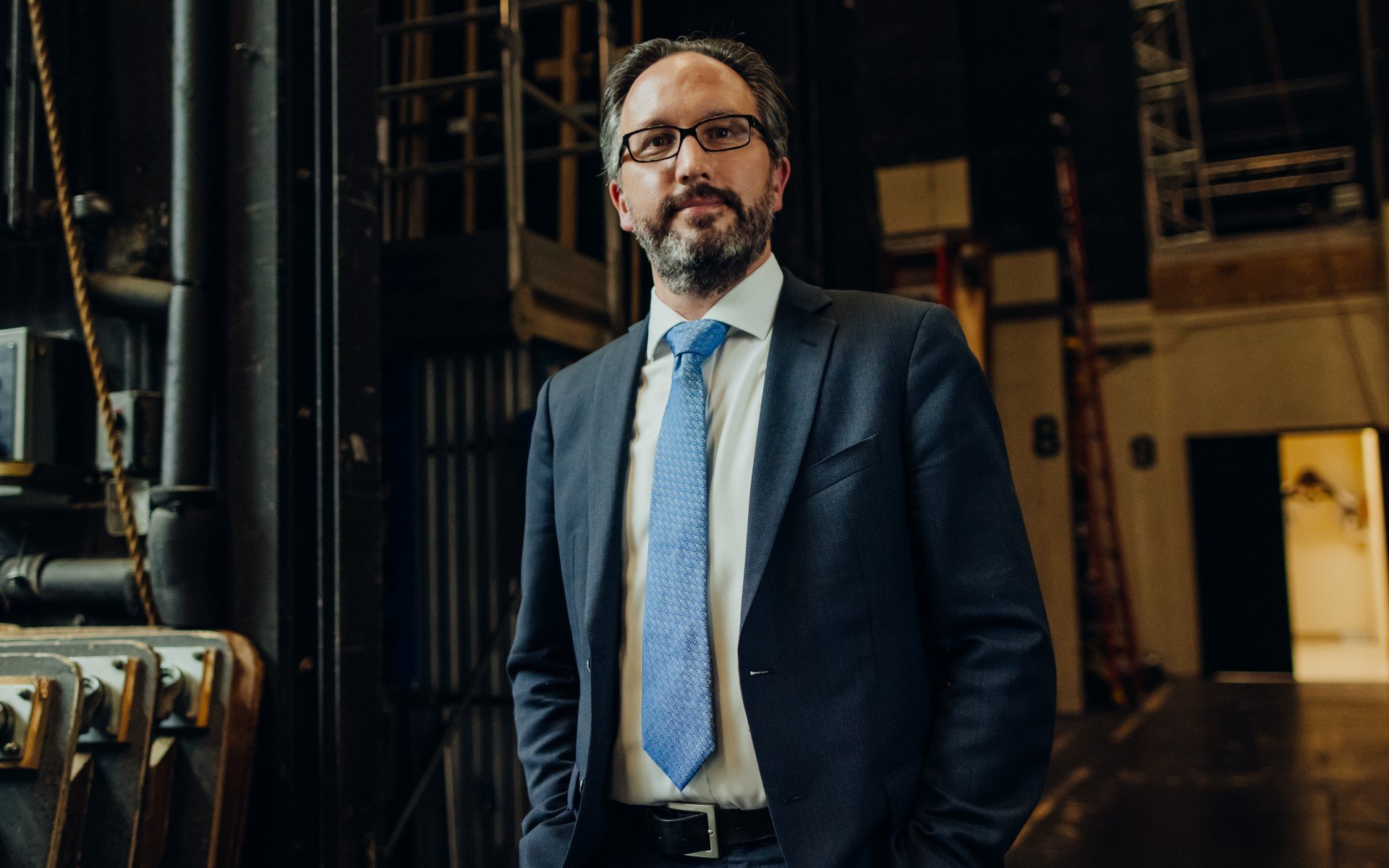
Dressing an icon is no small feat, and one that our designer, Eloise Kazan, was understandably apprehensive about. But Eloise is one of the most creative, imaginative, playful costume designers that I’ve had the pleasure to work with, and she has found some beautiful ways into this world.
 Eloise Kazan in the Opera’s Costume Shop with a sampling of the costumes from El último sueño de Frida y Diego
Eloise Kazan in the Opera’s Costume Shop with a sampling of the costumes from El último sueño de Frida y Diego
Eloise comes to this world of Frida as both an insider and an outsider. Her father was a Mexican diplomat, moving every three years or so. Her mother is Croatian and so Eloise was always able to see Mexico and Mexican traditions with reverence but also at a certain remove. She remembers being exposed to Mexican traditions like Los Días de los Muertos at her grandmother’s house, and then interpreting what was happening through her mother’s Croatian lens.
Frida Kahlo’s fashion identity also emerged from being an outsider. It was in San Francisco in 1930-31 when Frida was living at 716 Montgomery Street with Diego Rivera that, as a young 23-year-old, she yearned for memories of home. She started combining layers of traditional Mexican clothing – things that might have been purchased in a local store, but to which she’d then add embroidery and accents making them her own. She would also add in elements from other cultures and other places, such as the Chinese-inspired boot that she wore when she had to have a prosthetic leg. Eloise speculates that the boot might have come from Chinatown as she wouldn’t have had access to something like that in Mexico.

Eloise Kazan’s costume design for Frida Kahlo’s underworld costume, along with some of the reference materials.
The way that Eloise has designed these costumes reflects in many ways the same kind of layering of influences. Let’s take Frida’s orange dress as an example. In this production orange reflects the world of the dead, while blue (taken from Frida’s house, La Casa Azul), is the world of the living. Frida’s costume for the underworld includes a traditional Mexican shawl, woven on a loom, hand-stitched flowers that were made in Oaxaca, Indian fabric for the outer layer, a blouse also sourced from Oaxaca, and a Monarch Butterfly dress reflecting the belief of some Mexican communities that souls come back as butterflies. This costume is a beautiful encapsulation of the sensitivity that Eloise brings to her designs, but also the mirroring of Frida’s many influences.
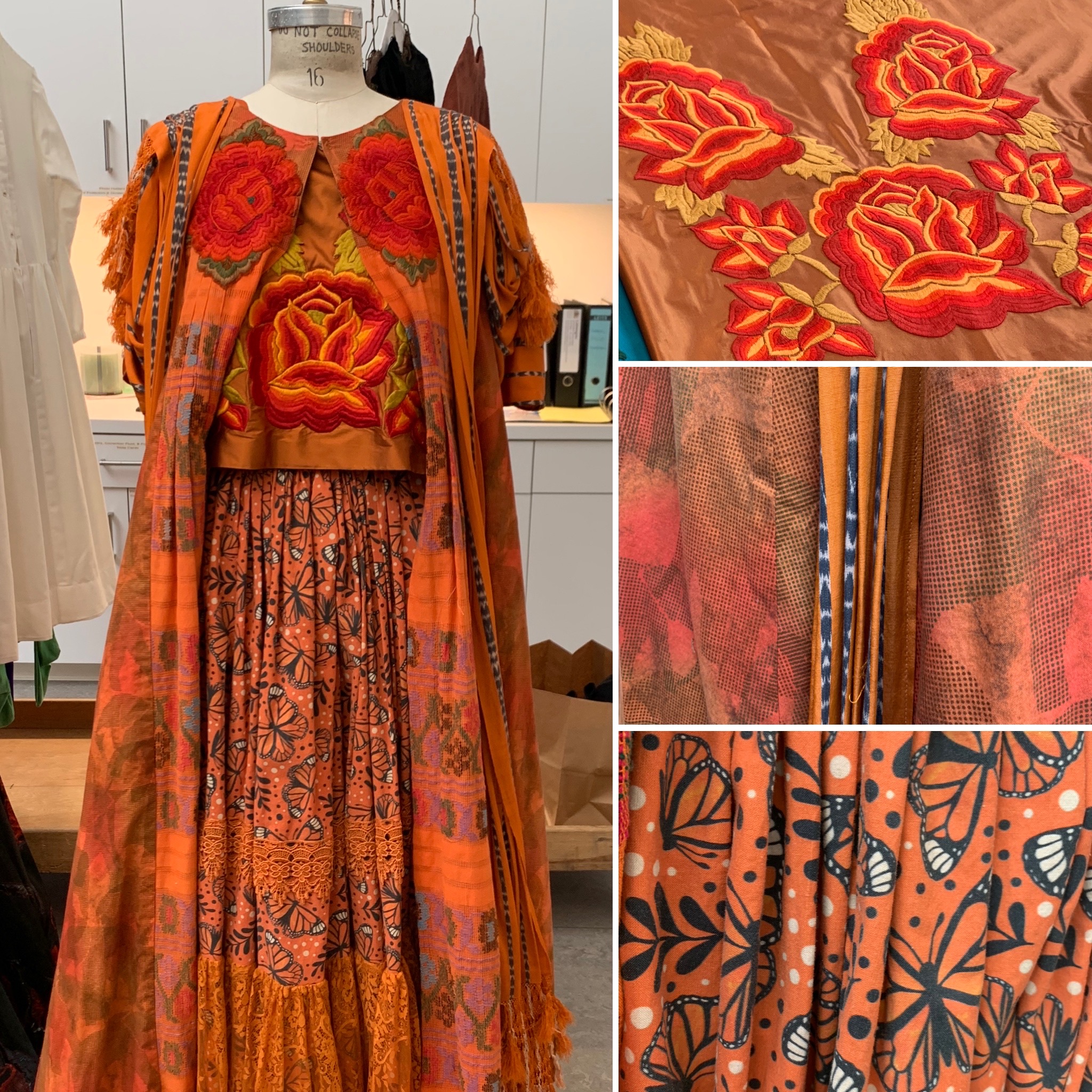 Frida Kahlo’s costume for the underworld (l) with design details showing (top to bottom) the embroidered flowers, the Indian fabric and the monarch butterfly skirt.
Frida Kahlo’s costume for the underworld (l) with design details showing (top to bottom) the embroidered flowers, the Indian fabric and the monarch butterfly skirt.
You’ll also see certain costumes that reflect a deeper history, a pre-Hispanic history, which was also very important to both Frida and Diego. For Eloise, this pre-Hispanic history is reflected in stone and architecture, leading to sculptural, stunning creations. Again, this is about layering textures, history, meaning, symbolism, synthesizing the history of a country into a narrative expressed in clothing.
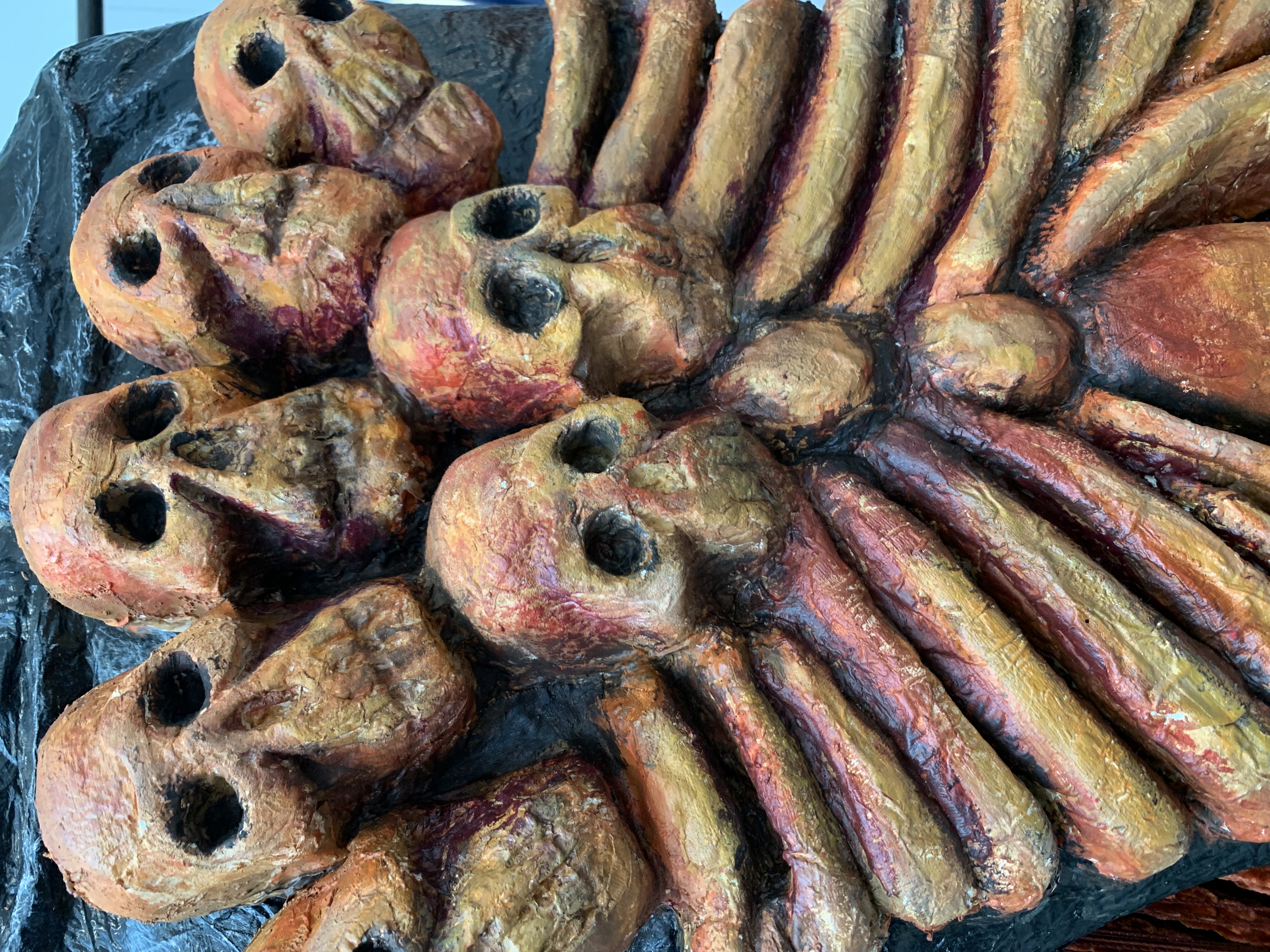 A detail from one of Eloise’s costumes for the opera.
A detail from one of Eloise’s costumes for the opera.
That meaning and symbolism is present everywhere you look in Eloise’s designs. When I visited with Eloise in our Norby Anderson Costume Shop, she and Costume Supervisor Lyre Alston were working on the blouse for Catrina’s costume (Catrina is the gatekeeper to the underworld). Lace skulls were being sewn onto the blouse – storytelling through texture, with Catrina’s skeletal form also found in the leather skeletal bodice. In fact, layering is not just in design, but in execution as Eloise loves working in Adobe Photoshop and playing around with layers of design – it’s like a digital version of a paper dressing doll!
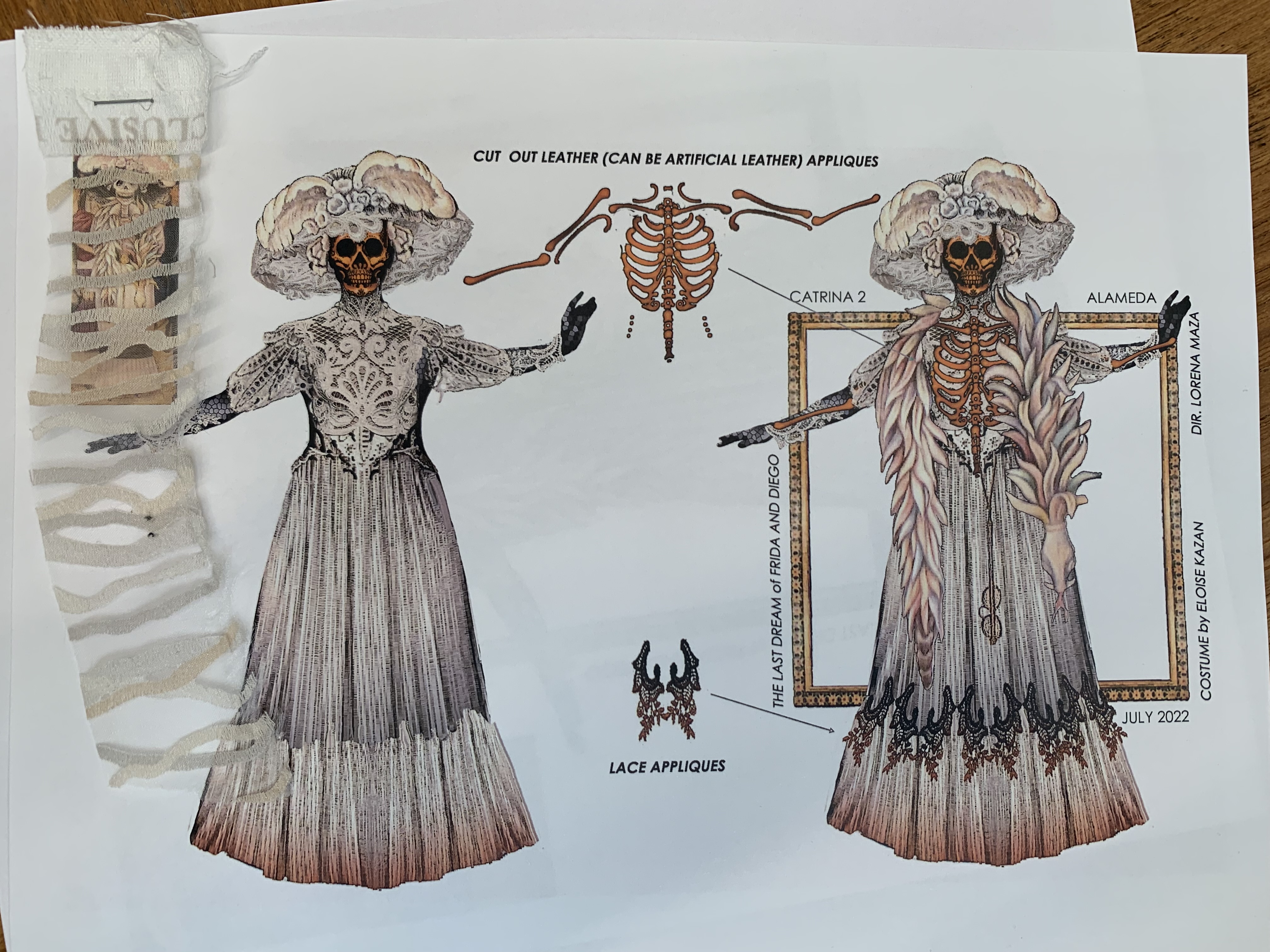
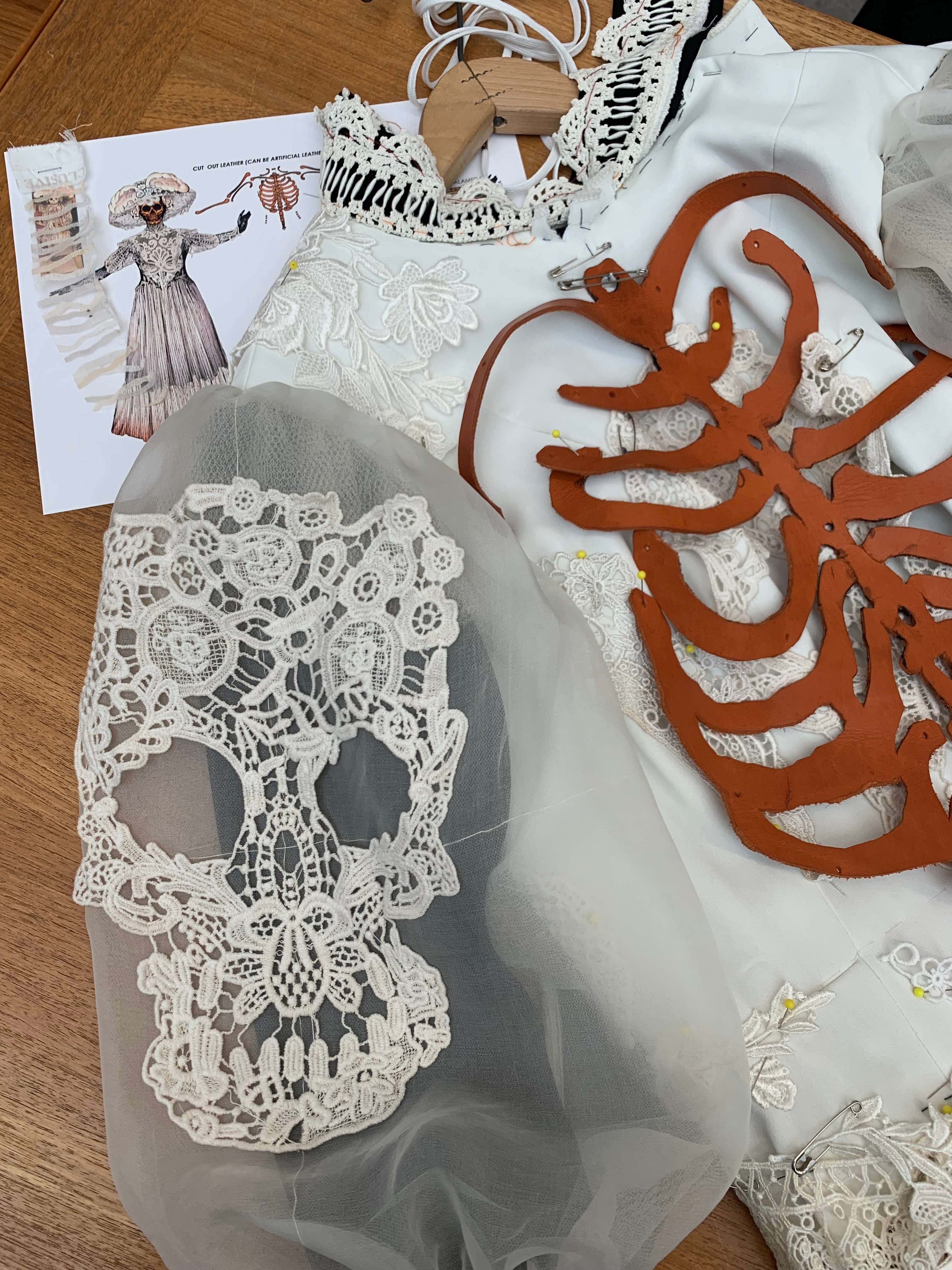
Detail from part of Catrina’s costume showing the lace skulls and leather bodice; and then the costume designs showing layering effects.
The Chorus features at times as the vox populi of Mexican history, with costuming iconography taken from many periods and integrated together in a blend of Mexican styles and influences. This is not a literal history lesson through costume, but rather a celebration of the arc of Mexican identity from the pre-Hispanic times through to the time of the opera. This kind of integration of styles and themes also finds manifestation in Diego Rivera’s murals and his fusion of history into storytelling.
 Some of Eloise’s designs for the chorus in the opera, showing a broad spread of Mexican history.
Some of Eloise’s designs for the chorus in the opera, showing a broad spread of Mexican history.
Eloise’s ability to express emotion through costuming is extraordinary. She told me that, because she moved around so much as a diplomat’s child, she had to get comfortable being in countries where she didn’t understand the language. But in such a reality, how do you explain yourself, where you come from and what you hold dear? For Eloise, drawing and visual representation became a form of language and communication. In drawing she found a more universal means of expression. She pursued a design trajectory at Bristol Old Vic Theatre School in the UK (as one of only 4 theatrical design students which basically meant they had to do it all!). That then ultimately found a natural manifestation on the stage and, for Eloise, the opera stage is the ultimate place to express the big emotions of life through art. The stage becomes a huge canvas, much like one of Diego’s murals.
 Eloise in the Opera’s Costume Shop with part of Catrina’s costume.
Eloise in the Opera’s Costume Shop with part of Catrina’s costume.
It is a joy to meet new artists and, in Eloise, along with director Lorena Maza, scenic designer Jorge Ballina, lighting designer Victor Zapatero and the whole creative team for Frida y Diego, I feel such a connection to not just the art, but also to the imperative of telling this story in the right way. When you start layering on this level of artistic vision and care through all the different disciplines of music, text, visuals, dramaturgy, you begin to feel the extraordinary creative fervor and impact of the opera stage. Eloise’s artistry for Frida y Diego is testament to how important those individual elements of vision are.
I encourage you to please add your own layer of creative flair to the performances of this new opera. Come dressed in honor of Frida Kahlo or one of the other characters in the opera. Come as Frida, Diego Rivera, the skeletal Catrina, or even Leonardo who dresses up as Greta Garbo. Be a part of the story telling within the opera house, and celebrate Frida’s style, in many ways birthed right here in San Francisco in 1930. I cannot wait to see the swirl of energy and design that you bring to this, as well as the vital creative energy of the stage and Eloise’s designs.


